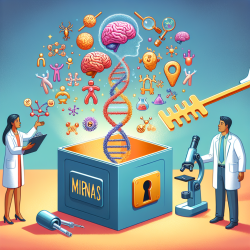Introduction: Navigating the Complex World of School-Based Therapy
In today's educational landscape, mental health professionals working in schools often find themselves navigating a complex maze of responsibilities and challenges. With the rising demand for specialized services such as speech therapy for autism, the task of ensuring adequate speech therapy staffing can feel overwhelming. Yet, amidst this complexity, there is a beacon of hope: data-driven decision-making.
The Power of Data in Speech Therapy
Data-driven approaches have revolutionized various fields, and speech therapy is no exception. By leveraging data, mental health professionals can not only streamline their processes but also enhance the quality of care provided to students. Here’s how:
- Identifying Needs: Data helps in accurately identifying the specific needs of students. For instance, tracking the progress of students receiving speech therapy for autism can reveal patterns and areas that require additional focus.
- Resource Allocation: With precise data, schools can make informed decisions about speech therapy staffing. This ensures that resources are allocated where they are most needed, preventing gaps in service delivery.
- Outcome Measurement: By consistently collecting and analyzing data, schools can measure the effectiveness of their therapy programs, leading to continuous improvement and better outcomes for students.
Implementing Data-Driven Speech Therapy: Steps to Success
Transitioning to a data-driven approach requires careful planning and execution. Here are some steps to guide mental health professionals in schools:
- Data Collection: Begin by collecting relevant data, such as student assessments, therapy session logs, and progress reports. Utilize digital tools and platforms that facilitate easy data collection and management.
- Data Analysis: Employ statistical methods and software to analyze the collected data. Look for trends, correlations, and insights that can inform your therapy practices.
- Decision Making: Use the insights gained from data analysis to make informed decisions about therapy interventions, staffing, and resource allocation.
- Continuous Evaluation: Regularly evaluate the impact of your decisions and adjust your strategies as needed. This ensures that your approach remains effective and responsive to the changing needs of students.
Conclusion: Taking the Next Step
Feeling lost in the ever-evolving landscape of school-based therapy is a common experience for mental health professionals. However, by embracing a data-driven approach, you can transform this feeling into one of empowerment and clarity. By taking the next step towards implementing data-driven speech therapy, you are not only enhancing your own practice but also making a significant positive impact on the lives of students.
At TinyEYE, we are committed to supporting schools in this journey. Our online therapy services are designed to integrate seamlessly with your existing systems, providing you with the data and insights needed to make informed decisions. Together, let's unlock the potential of every student.










